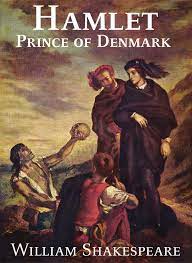
John Everett Millais’ Ophelia depicts Lady Ophelia’s mysterious demise by drowning. In the play, the gravediggers focus on whether Ophelia’s death was a suicide and whether or not she merits a Christian burial. Hamlet jokes with Claudius about where he has hidden Polonius’s body which of the government policies below is most unlikely to encourage per capita economic growth, and the king, fearing for his life, sends Rosencrantz and Guildenstern to accompany Hamlet to England with a sealed letter to the English king requesting that Hamlet be executed immediately. In the third act of Shakespeare’s Hamlet, Ophelia goes to Hamlet to return “remembrances” that he had given her when he was wooing her.
Even without the moms, however, love continues to be an necessary problem. As I stated in discussing Astrophel and Stella, love was a serious concern in Elizabethan literature. A great deal of literature was devoted to like, and a nice deal of that literature was additionally devoted to making fun of the great deal of literature that was devoted to like.
And suddenly the boundaries of reality have been stretched once more. That dividing line between the stage and the viewers dissolves, as the viewers becomes part of the larger play that includes each gamers and observers. If the actors in As You Like It are portraying characters who are looking for or affirming their identities, then so are the people within the audience, that is, the people who have undertaken to play the role of the viewers within the context of the bigger play of the world. One helpful way to learn these performs, or any play, is to faux that you might be a director trying to check how the play should be performed. These are questions that have to be thought of in staging any play, however they are especially challenging in Shakespeare. Often we all know that a character comes on stage because another character says one thing like, “Here comes Othello”; and often we are able to tell that a scene is ending because Shakespeare usually ends scenes with a rhyming couplet .
He opposes this Latin word towards the Celtic ‘sweating’ and ‘grunting’ of a living individual as an Arab beneath an overwhelmingly heavy load – a fardel, the load carried by a camel. Who would bear that when he might just draw a line under life with one thing so easy as a knitting needle – a bodkin? It’s quite a giant thought and it’s fascinating that this enormous act – drawing a line under life – can be accomplished with one thing as easy as a knitting needle.
The awareness of it makes him susceptible to involvement in Claudius’s plotting against Hamlet, and represents the moral sensibility of Elsinore in miniature. When they don’t appear to be invoking absent deities, the play’s characters turn to venatorial language to claim the purposefulness of their existences. This level of comparison is totally consistent with the broader thrust of the De officiis, in which the social half or position adopted by a person is his persona. Personae were the masks worn by Greek and Roman actors to make their on-stage characters recognized. By extension, they came to do duty both for on-stage characters as a complete, and for the actors who performed them.
